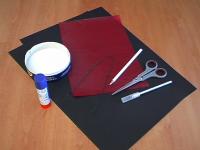Caring for the houseplant Euphorbia leuconeura properly
The Euphorbia leuconeura comes along proudly, with an imposing stem and evenly arranged leaves - a real eye-catcher in the room. The prerequisite for optimal growth and a top appearance is the right care. This is not difficult in itself, but there are a few important details that you should pay attention to.
Characteristics of the Euphorbia leuconeura
- The Euphorbia leuconeura is native to Madagascar and belongs to the plant family of the milkweed family, which includes about 6000 species. Their leafless and hairy stems and milk-containing parts of the plant are characteristic.
- The characteristic distinguishing feature of Euphorbia leuconeura is its bristly, brownish-red color Edged plant stem as well as the leather-like leaves, which have a herringbone-like grain exhibit.
- The plant can reach a height of about 1.80 meters in tropical regions. As a houseplant, it grows to around 0.80 to 1.0 meters tall.
- The Euphorbia leuconeura is also known colloquially as milkweed, Madagascar jewel or spit palm. Spit palm because the wild, shrubby plant hurls its seeds several meters into nature. The seeds are also catapulted out of the plant in the room.
Location of the houseplant and watering behavior
The Euphorbia leuconeura is generally a fairly undemanding, robust and therefore easy to cultivate houseplant. The location and the correct watering are important for magnificent growth and healthy growth.
Cereus peruvianus is a popular species of cactus, also known as rock cactus ...
- If you want to enjoy your Euphorbia for a long time, place it in a light, shady to partially shaded place - direct sunlight is generally not so good for you. The plant should also have a warm place in winter.
- It may sound strange, but the Euphorbia leuconeura doesn't like to stand alone. It thrives best when there are other plants in the immediate vicinity. With young plants you may notice the phenomenon that a single leaf grows particularly quickly and leans towards the neighboring plant. You'd think she'd like to get in touch.
- Water the houseplant about twice a week in spring and summer, and give it an extra ration of water if the temperature continues.
- Under no circumstances should the Euphorbia take a permanent footbath and receive too much water at once, so that waterlogging forms. This can lead to root rot.
- Occasional watering once a week is sufficient in winter. If the soil is still wet, wait a few more days before watering - but the soil should never dry out completely.
Soil, fertilization and poisonous sap of the plant
- You can use commercially available potting soil as a substrate Houseplants and use cacti, preferably without peat.
- You should fertilize the Euphorbia leuconeura from April to September - about every six weeks. A fertilizer for cacti is suitable for this.
Last but not least, an important note: only handle the euphorbia with gloves, as it contains a poisonous juice. This can escape even with the slightest damage to the plant. Wash your hands very thoroughly after touching them with your bare hands. If you have a Euphorbia in the house, it should be out of the reach of young children, but also for Cats or be other curious pets.
How helpful do you find this article?


